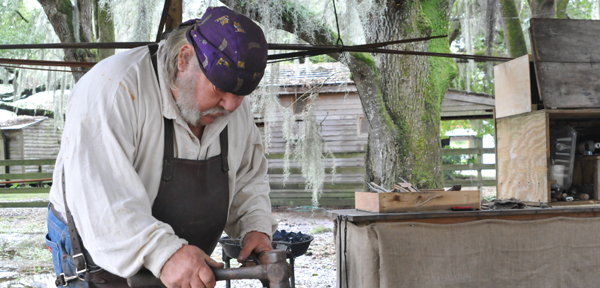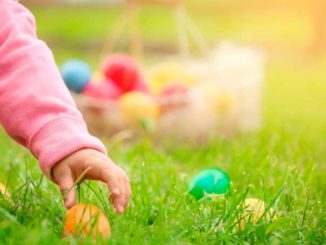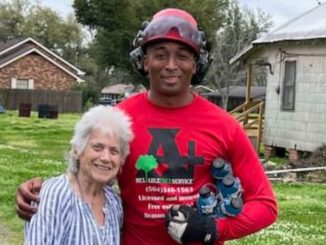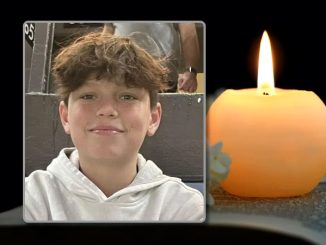
White smoke curled upward from Aubrey Robert’s coke forge as he watched for signs of the red-hot glow indicating the metal he was working on was ready to be hammered into one of his unique pieces.
Under the sprawling green canopy of Destrehan Plantation’s huge oaks, Robert demonstrated the craft of blacksmithing to some of the many visitors who come through the plantation who stopped and watched with fascination as he pounded a metal rod into a leaf.
Robert also tells them about his days as a farrier, which is what drew him into becoming a blacksmith.
“I had horses that needed their feet trimmed to be shod,” the Ama resident said of how he started as a farrier. When he couldn’t find one who would come to his home to shoe his horses, Robert took a course by mail that showed him how to do it himself. “I liked doing it and I had people who wanted me to do it.”
With this new education, he gained confidence about the work.
“I thought I was becoming a doctor,” Robert mused about how technical the farrier course that he completed. “I had to learn how the horse is supposed to stand and decide if there was something I could do with the shoeing to make him stand right. There were things you could do and things you should leave alone.”
He was given a pattern and made a shoe to fit that pattern, which meant Robert had learned to sculpt the horseshoes.
When a horse averages 1,200 pounds, walking right is big deal.
“Imagine one of these running 35 mph … the strain when these animals land,” Robert said. “Sixty percent of circulation comes from running and the faster he goes the more stress he puts on it (shoes).”
By the time the month-long course was done, he could make 27 corrective shoes to correct a horse’s walking problem.
“Some I used a lot and some I’ve never used,” Robert said of the shoe patterns.
But one thing for sure was he found his much desired confidence about being a good farrier.
From there, Robert started shoeing his own horses and then friends started asking him to do their horses and that lead to his new career as the farrier with a highly marketable edge – the guy who’s willing to make a house call.
His business grew from there.
“Just about every horse I did was out of my truck,” he said. “Everywhere I went I left my business card and I got a call.”
At the height of his business, he could average shoeing 30 horses a week, particularly during times like Mardi Gras when people ride the horses in parades.
The work had its perils.
Robert was kicked twice by a horse, as well as had a nail stuck in his arm the same number of times.
He had to make the corrective shoes in the forge and from there his work got more creative with items like belt buckles or a fireplace poker. He joined the Gulf Coast Blacksmith Association, where he learned more projects from the group’s monthly demonstrations like making a knife, a leaf or spoon.
Robert’s work has grown to include curtain rods, small decorative animals, spurs, bits for horse mouths and brands for cattle.
Blacksmithing is a disappearing art both as a craft and in utility, which he acknowledged is a concern. He knows of only two blacksmiths and farriers in Louisiana, and he says there are even fewer of them who do both well.
“I always did like doing since I started shoeing,” Robert said of extending his work to being a blacksmith. When a new blacksmith was needed for demonstrations at Destrehan Plantation, he asked about the position and got it in January. He’s gotten some orders for work such as a fireplace set and enjoys how it helps keep him busy. “I get ideas as I’m working … something from my mind.”




Be the first to comment